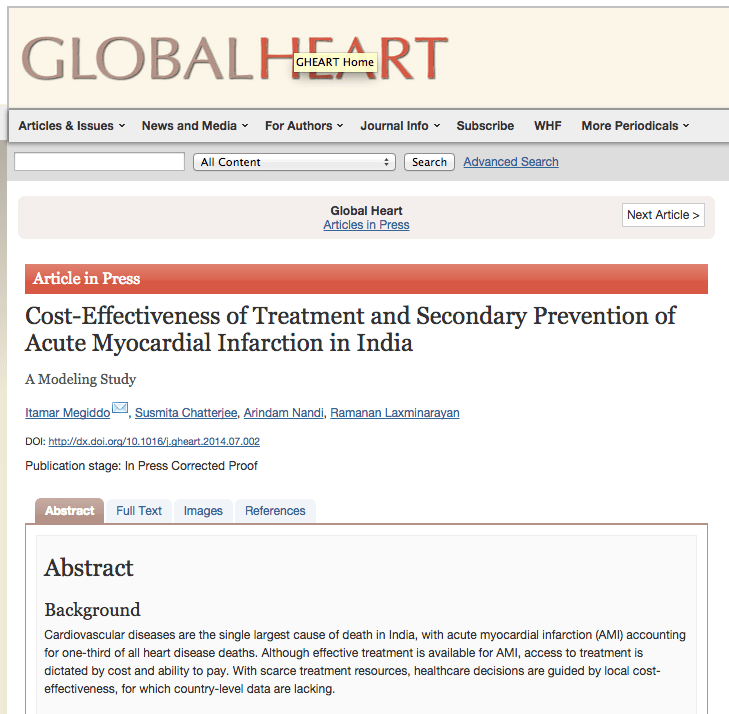November 26, 2014

The Question
What is the cost-effectiveness of policies that expand the use of aspirin, injection streptokinase, beta-blockers, angiotensin-converting enzyme inhibitors, and statins for in India for treatment of acute myocardial infarction (AMI)? What is the cost-effectiveness of a hypothetical polypill for secondary prevention?
What we found
Policies expanding both AMI treatment and preventive therapies are cost-effective, based on gross domestic product per capita comparison. Increasing in coverage with aspirin and streptokinase could avert approximately 335,000 disability-adjusted life years (DALY) among 30- to 69-year-olds in India. Aspirin and beta-blockers for secondary prevention would be highly cost-effective at 80% coverage, and angiotensin-converting enzyme inhibitors would also be cost-effective. The hypothetical polypill would be more effective than providing its components separately, even without accounting for the likely increase in treatment adherence.
Why it matters
Cardiovascular diseases are the single largest cause of death in India, with AMI accounting for one-third of all heart disease deaths. Although effective treatment is available for AMI, access to treatment is dictated by cost and ability to pay. With scarce treatment resources, healthcare decisions are guided by local cost-effectiveness, for which country-level data are lacking.

